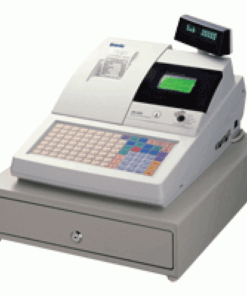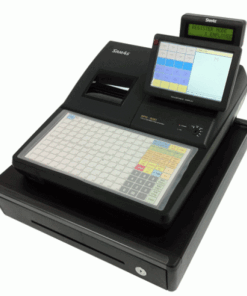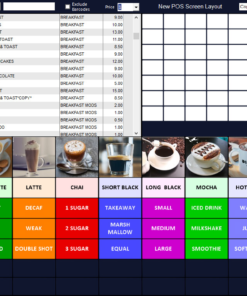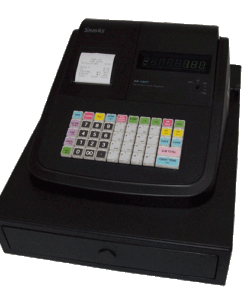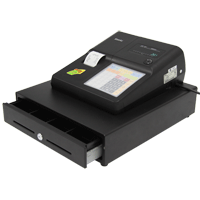Cash Register – Samoa
In Samoa, cash registers serve a fundamental role in various businesses, ranging from small shops and local markets to larger retail stores and restaurants. Here are some common uses of cash registers in Samoa:
- Recording Sales: Cash registers are primarily used to record sales transactions. When customers make purchases, the cashier enters the items’ prices, and the cash register calculates the total amount owed.
- Managing Inventory: Many modern cash registers are equipped with inventory management features. They track the quantities of items sold and help businesses monitor stock levels. This allows for better inventory control and ensures that popular items are restocked promptly.
- Processing Payments: Cash registers accept various forms of payment, including cash, credit/debit cards, and electronic payment methods. They facilitate secure and efficient payment processing, providing customers with different options for completing transactions.
- Generating Receipts: After a transaction is completed, cash registers print receipts for customers. These receipts detail the items purchased, their prices, any applicable taxes, and the total amount paid. Receipts serve as proof of purchase for customers and aid in record-keeping for businesses.
- Tracking Sales Data: Cash registers collect valuable sales data, such as daily revenue, popular products, and peak sales hours. This information helps businesses make informed decisions about inventory management, pricing strategies, and staffing levels.
- Ensuring Accuracy: By automating calculations and recording transactions electronically, cash registers help minimize errors in cash handling and accounting. This promotes accuracy in financial reporting and reduces the risk of discrepancies.
Overall, cash registers play a crucial role in streamlining operations, improving customer service, and maintaining financial integrity for businesses in Samoa, here is list of things that needs to be done:
- Setup: Begin by setting up the cash register. This involves plugging it into a power source and ensuring it’s properly configured for your business needs, including setting the date and time.
- Programming: Depending on the sophistication of your cash register, you may need to program it with the prices of your products or services. This could involve inputting item names, prices, and tax rates.
- Cash Management: Ensure you have enough cash in the register to make change for customers. Establish procedures for when the cash needs to be removed and deposited in the bank, typically when the cash drawer becomes full or at the end of the business day.
- Transaction Process: When a customer makes a purchase, ring up the items they are buying by entering the appropriate codes or pressing the corresponding buttons on the cash register keypad. Make sure to accurately enter the quantities and prices. The cash register will calculate the total amount due, including any taxes.
- Payment: Accept the payment from the customer. This could be cash, credit/debit card, or other forms of payment depending on what your business accepts. Enter the payment amount into the cash register and calculate the change due to the customer if they paid with cash.
- Receipt: Print or email a receipt for the customer if they request one. Some cash registers automatically print receipts, while others require manual input.
- Record Keeping: Keep track of transactions for accounting purposes. Many modern cash registers have built-in features for generating reports, tracking sales, and managing inventory. Make sure to reconcile your cash register records with your sales at the end of each day.
- Security: Protect the cash register and its contents from theft or tampering. Ensure that only authorized personnel have access to the cash register keys or login credentials.
- Maintenance: Regularly clean and maintain the cash register to ensure it functions properly. This includes cleaning the keypad, screen, and printer, as well as performing any necessary software updates.
- Training: Provide training to your staff on how to use the cash register effectively and accurately. This will help prevent errors and ensure smooth transactions for your customers.
These steps provide a basic outline of how to operate a cash register in Samoa or any other location. Specific regulations or requirements may vary, so it’s essential to familiarize yourself with any local laws or guidelines that apply to your business.




